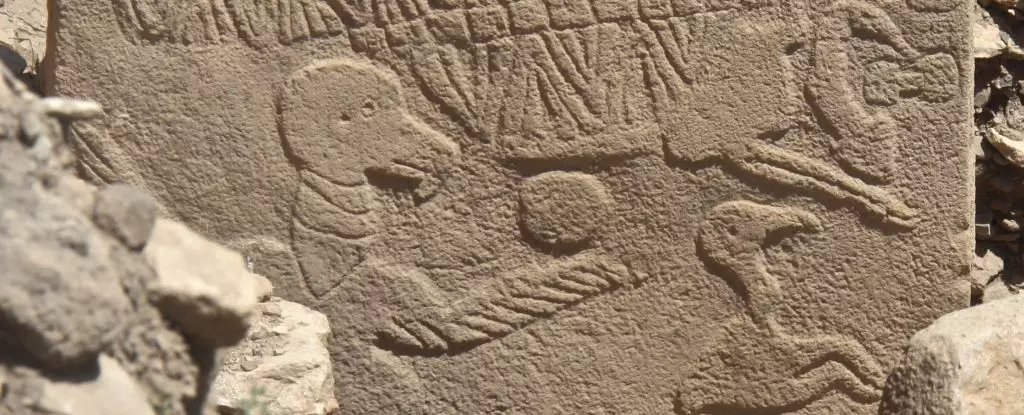The ancient monument of Gobekli Tepe in Turkiye stands as a testament to the ingenuity and advanced knowledge of our ancestors over 10,000 years ago. This temple complex, the oldest of its kind, holds within its walls the secrets and mysteries of a civilization long gone.
The Discovery of the Calendar
Recent findings at Gobekli Tepe have unearthed a carving on a wall that could potentially be the earliest evidence of a calendar system. This discovery sheds light on how the Neolithic people of Turkiye may have used this ancient site as an observatory to track the passage of time and the changing of the seasons.
The Vulture Stone
Of particular interest is the Vulture Stone, a carved pillar within the complex that depicts a bird surrounded by stylized patterns. Previous research by Martin Sweatman suggested that the figures on the Vulture Stone could represent constellations and even record the impact of a comet that occurred 13,000 years ago, coinciding with the onset of a mini ice age known as the Younger Dryas.
The Analysis
Sweatman’s meticulous analysis delves into the intricate carvings found on the pillars at Gobekli Tepe. By counting and studying the V-shaped marks, he theorizes that they could represent days, with one pillar potentially depicting a year consisting of 365 days, aligned with the lunar and solar calendars of the time.
Further examination of the carvings on the pillars reveals symbols that may represent cosmic events such as solstices and meteor showers. Sweatman suggests that these symbols, including the V-shaped marks worn by the bird on the Vulture Stone, could have been used to track and demarcate time, showcasing the advanced astronomical knowledge of the ancient people.
Despite Sweatman’s compelling findings, archaeologists excavating at Gobekli Tepe have disputed his conclusions. The ongoing debate highlights the complexities of unraveling the mysteries of this ancient site and the challenges of interpreting the significance of the carvings and symbols found within.
As more research is conducted and discussions continue, Gobekli Tepe remains a focal point for understanding the early origins of civilization, religion, and agriculture. The site serves as a reminder of the remarkable abilities of our ancestors to observe, analyze, and interpret the world around them, paving the way for future discoveries and insights into our shared history.


Leave a Reply